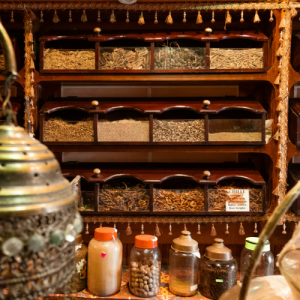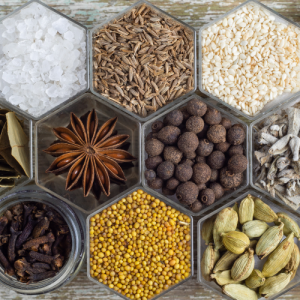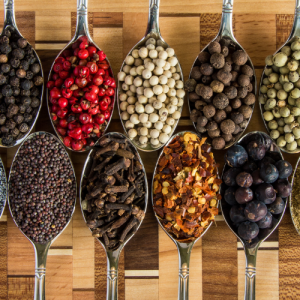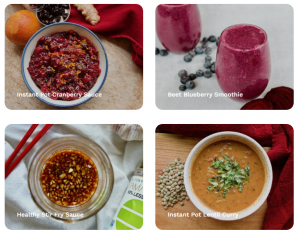

Don’t you just love how happy your taste buds feel when you use spices to season your foods? WE DO TOO! Believe it or not, spices are not only great for flavor, but they are great for health too! In this article, you will learn about how to use spices for health, and some helpful tips for adding them to your recipes!


What are spices?
Simply put, spices are the dried parts of plants that are used in small quantities to flavor food. Spices come from many different plant parts: roots (ginger, turmeric), rhizomes, stems, leaves, bark (cinnamon), flowers (saffron), fruits/berries (black pepper, chili powder), and seeds (cumin, nutmeg). A wide variety of spices provide a wide range of flavors!

Health Benefits of Spices
All spices have compounds in them that protect us from diseases. Here are some general health benefits of spices:
Antioxidant properties
Anti-inflammatory
Glucose-lowering effects
Appetite control
Weight maintenance
Together, spices’ benefits for health may help lower the risk of developing the following chronic diseases: cardiovascular diseases, neurodegenerative diseases, chronic inflammation, cancer , obesity, and type 2 diabetes.

Common Spices Health Benefits
Black Pepper
Flavor: Pepper adds flavor to any dish. Pepper has a bitter, woody, and slightly spicy flavor. The compound that gives pepper its spicy flavor is called piperine.
Health Benefits: Piperine has antioxidant effects, which means that it can protect us from harmful compounds that damage our bodies. Antioxidants keep our bodies healthy and fight off disease.
Culinary Tips
- Black pepper can be bought whole, cracked, or ground. Whole peppercorns have the strongest flavor. Freshly cracked pepper has a more powerful flavor than pre-ground pepper.
- Black pepper is typically used in savory dishes, though some homemade chai tea recipes use whole peppercorns.
Recipe Inspiration:

Cinnamon
Flavor: Cinnamon has a sweet, musty, and woody flavor. The compound that gives cinnamon its spicy flavor is cinnamaldehyde.
Health Benefits: Cinnamaldehyde has anti-diabetic and glucose-lowering effects. These effects may promote steady blood sugar levels after a meal.
Culinary Tips
- Cinnamon is a flavor enhancer and is great for garnishing desserts and beverages.
- Cinnamon is typically used in breakfasts and baked dishes, but is also common in savory Mexican, Moroccan, and Middle Eastern dishes.
Recipe Inspiration:

Turmeric
Flavor: The flavors of turmeric are bitter, earthy, minty, musty, and woody. The compounds in turmeric that give it its vibrant, yellow color are called curcuminoids.
Health benefits: Turmeric has anti-inflammatory properties. Moderate acute inflammation is fine, but chronic inflammation increases your risk of developing chronic diseases. To maximize turmeric’s health benefits, combine with black pepper. Black pepper increases turmeric’s bioavailability up to 2000%!
Culinary tips
- Turmeric is often paired with warm spices such as cinnamon, black pepper, and ginger.
- Turmeric is often found in mustard, pickles, relish chutneys, rice, butter, and cheese to enhance color and flavor.
- Curry is a common dish that uses turmeric.
- Tip: Turmeric can stain kitchen equipment! To combat this, coat utensils with mineral oil or clean with baking soda, soap, and hot water.
Recipe Inspiration:

Ginger
Flavor: Ginger has a citrusy, musty, soapy, hot, and bitter flavor.
Health benefits: The active compounds in ginger are called oleoresins and are beneficial for improving digestion and relieving nausea.
Culinary Tips
- In savory applications, ginger pairs well with garlic, red pepper, coriander, cumin, and turmeric, and is often found in curry powder blends.
- Ginger is also great for baking and is commonly used in apple and peach pies along with cinnamon and cloves.
Recipe Inspiration:


Spices Cooking Tips
Learning how to cook with spices can help improve their palatability. Here are our top tips for cooking with spices:
- When using spices in sauces, spreads, dressings, batters, or doughs, whisk either with the wet ingredients or dry ingredients first for even distribution.
- If you are unsure about the flavor of a spice, start with less and add more to taste.
- When doubling a recipe, don’t double the spices at first. Doubling the spices can often overpower the dish or create a bitter flavor. Again, you can always start with less and then add more to taste.
- If cooking on a stovetop, cook spices on dry heat for 30-60 seconds max, otherwise the spices can burn and taste bitter. Then add liquid or other ingredients. However, if liquid is already present in the pan (such as a sauce, soup, or stock), you don’t have to worry about burning or bitterness.
- To enhance the flavor of spices, bloom them first in oil before adding other ingredients in a recipe. Heat oil and ground or whole spices over medium-low heat until fragrant.
